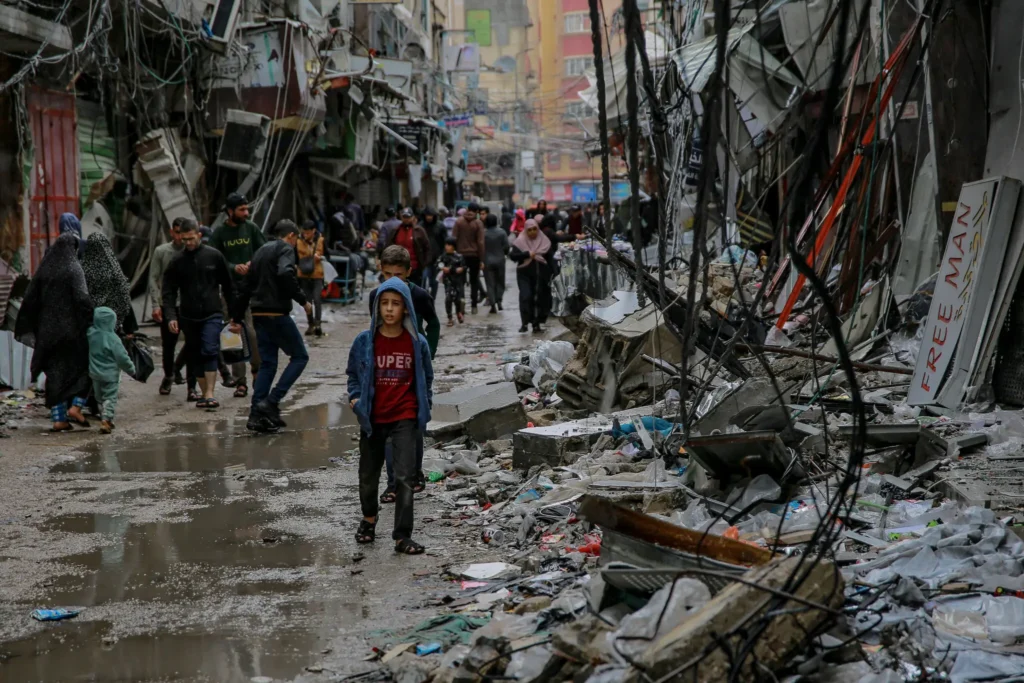
Israel-Hamas Ceasefire Brings Hope for Hostage Release and Humanitarian Aid in Gaza
Israel-Hamas Ceasefire Brings Hope for Hostage Release and Humanitarian Aid in Gaza
A temporary ceasefire between Israel and Hamas has begun, marking a hopeful yet fragile step toward alleviating the humanitarian crisis in Gaza. This ceasefire is intended to allow for a hostage and prisoner exchange, while also facilitating the entry of much-needed humanitarian aid into the besieged region. Though temporary, the pause in hostilities could offer a momentary reprieve for civilians caught in the middle of the conflict.
Details of the Ceasefire Agreement
Under the terms of the ceasefire, Israel and Hamas have agreed to halt military actions for a set period. This truce has allowed negotiators to work on an exchange of hostages held by Hamas and Palestinian prisoners in Israeli custody. The exchange represents a significant development, potentially bringing relief to families who have waited for months with uncertainty about the fate of their loved ones.
The ceasefire also provides a critical window for humanitarian organizations to deliver food, medical supplies, and other essentials to Gaza, where living conditions have deteriorated rapidly. The international community, including entities like the United Nations and Red Cross, has called for an increase in aid deliveries, and this ceasefire allows for the immediate entry of these supplies.
For updates on the conflict and ceasefire progress, visit Al Jazeera’s Middle East coverage.
Humanitarian Impact in Gaza
The recent conflict has led to a humanitarian crisis in Gaza, with reports of extensive damage to infrastructure, a shortage of medical supplies, and a lack of clean water and electricity. Health facilities in Gaza are under severe strain, struggling to provide adequate care amid ongoing bombardments. The ceasefire has been welcomed by aid organizations and countries worldwide, as it provides an opportunity to deliver emergency relief to affected areas.
The first deliveries of food, clean water, medical aid, and fuel are expected to arrive soon. UNICEF and other international organizations are coordinating efforts to ensure that humanitarian aid reaches the areas where it is most needed, particularly children and families who have been disproportionately affected.
For a closer look at Gaza’s humanitarian needs, refer to UNICEF’s crisis report.
Hostage and Prisoner Exchange: What It Means for Both Sides
The hostage and prisoner exchange is one of the most anticipated aspects of the ceasefire agreement. Israeli hostages, including civilians taken by Hamas, are expected to be returned to Israel in exchange for Palestinian prisoners held in Israeli jails. The exchange holds symbolic significance for both sides and could help to build trust in ongoing diplomatic discussions.
Hostage situations have historically been contentious in the Israeli-Palestinian conflict, and this exchange could be a significant step in de-escalating tensions, at least temporarily. For the families involved, this exchange offers a long-awaited reunion and a glimmer of hope amid ongoing violence and uncertainty.
The Role of International Mediation
The ceasefire agreement did not come about easily and required extensive mediation efforts from international players, including Egypt, Qatar, and the United States. These countries have been crucial in negotiating terms and encouraging both parties to agree to the truce. In particular, Qatar’s diplomatic influence with Hamas and Egypt’s role as a regional mediator have been pivotal in ensuring a temporary halt to the violence.
The United States has also voiced support for the ceasefire, urging both sides to extend it as a pathway to longer-term stability in the region. President Joe Biden has emphasized the need for ongoing dialogue and support for humanitarian aid efforts, while also reiterating America’s stance on a two-state solution as a framework for lasting peace.
Learn more about international mediation efforts in the region at The Washington Post’s Middle East section.
Challenges Ahead: Will the Ceasefire Hold?
While the ceasefire is a promising step, significant challenges remain. Ceasefires in the region have historically been fragile, often ending abruptly due to political tensions, security breaches, or other provocations. Both sides have voiced skepticism about the truce, with Hamas officials calling it a “temporary respite” and Israeli leaders emphasizing that the pause does not signify a shift in broader military strategy.
One critical issue that may affect the ceasefire’s longevity is the blockade on Gaza. Israel’s restrictions on movement in and out of Gaza have been a major source of tension and a recurring issue in the peace process. Hamas, on the other hand, remains adamant about its demands for the lifting of the blockade, which Israel argues is necessary to prevent weapon smuggling. The conflicting interests and long-standing grievances on both sides create a challenging environment for sustaining peace.
Public Reactions and Calls for Peace
Public reactions in Israel, Gaza, and internationally reflect a complex mix of hope, skepticism, and fatigue. Israelis are hopeful for the safe return of hostages and a possible easing of security threats, while Palestinians in Gaza hope that the ceasefire will bring at least a brief reprieve from the violence and hardships they face daily. The international community has also called for more substantial steps toward peace, emphasizing that a temporary truce, while valuable, is not a sustainable solution.
Global leaders and humanitarian organizations are pressing for broader peace negotiations that address root causes, including the ongoing occupation, security concerns, and humanitarian needs in Gaza. They argue that without addressing these fundamental issues, the region is likely to experience further cycles of conflict.
For in-depth coverage on the Israel-Palestine conflict, check out The New York Times.
Conclusion
The Israel-Hamas ceasefire offers a rare moment of calm in an otherwise tumultuous conflict, with significant implications for hostage exchanges and humanitarian aid access. While it’s a welcome development, the ceasefire also highlights the ongoing challenges that both Israelis and Palestinians face in their quest for stability and peace. As humanitarian aid flows into Gaza and hostages are reunited with their families, the world watches closely, hoping that this momentary truce might be a foundation for longer-term peace.
The ceasefire agreement is a temporary but critical step toward addressing the immediate needs of both sides, though the complex and deeply rooted issues in the conflict remain. As international mediators continue to work toward more permanent solutions, the world remains hopeful that moments of peace, however brief, can lead to lasting change in the region.
Image credit – France-Presse — Getty Images


